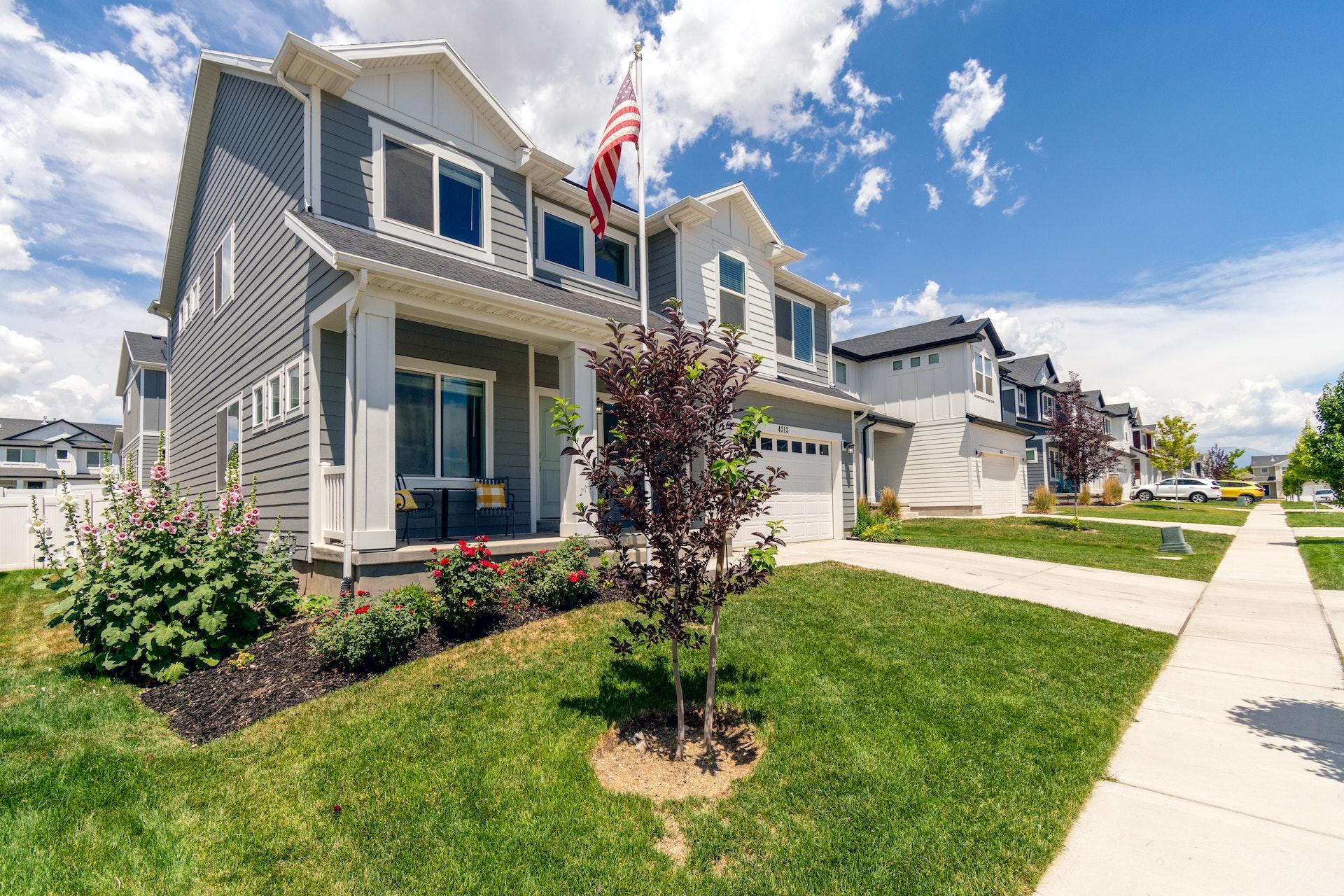I thought I timed it perfectly. Looking out my kitchen window I saw no one in sight. I opened the front door and darted toward the mailbox at the end of the driveway, grabbed the mail, and assumed I was in the clear. Only to turn back to the house and see my neighbor Syd and his dog standing on my lawn staring back at me. “Hey!”, Syd yelled. Damn it, I thought I timed this perfectly.
Every day I can count on Syd to walk his dog across my lawn, two, maybe three times a day. A harmless act unless he corners you for a 25-minute conversation while you’re just attempting to grab the mail. How he got from his house to my lawn undetected I have no idea, but it didn’t matter. I was stuck and had to endure. I had to be neighborly. But today’s conversation was different from those that have proceeded it. Today’s conversation revealed much more than I think Syd had intended. On this day, without prompting, Syd confessed to spying on my house and eavesdropping on conversations coming from my dining room windows. “You’d be surprised what high-power binoculars can see,” he said without hesitation. Then as though that wasn’t bad enough, he added, “you and your husband have such lively conversations.”
I froze, unprepared for his relaxed attitude toward the invasion of my privacy. With milliseconds to respond I knew I had to choose my next words wisely. Of course I would love to curse him out and drop him where he stood. Ask him why he thinks it’s okay to spy on my house and then have the nerve to tell me as though I should have no say in the matter. But instead, as I’ve done multiple times when confronted with weird behavior, I faked a smile and wrote off his intrusive actions as a symptom of his retirement and boredom. I have nothing to hide, I thought. Whatever he sees or hears is on him, I have to get back to work.
However, after one too many eyebrow raising encounters with Syd that season, including my husband witnessing him peeping into our garbage can while walking his dog, I started to feel deep down inside that these events were connected, that there was something else larger at play. That at the bare minimum, he was using the mundane task of walking his dog to be nosy and I wanted no part of it.
As a child growing up in upstate New York my family moved from apartment to apartment, five in total until I went off to college. We never struggled to make ends meet, but the American Dream of owning a home was always that, a dream and never an actualization. With each apartment complex or townhouse came a new set of neighbors, everyone conditioned to keep their business to themselves. Walking your dog anywhere but in the designated zones was a no-no and chatting with your neighbor beyond the casual “hello” and “have a nice day” was unheard of. Every communal living situation was the same, regardless of racial or cultural lines – you do your thing and I’ll do mine, just don’t burn the building down while my family sleeps.
Awkward encounters with Syd began happening almost immediately after my husband and I moved into the neighborhood. We purchased the house during the pandemic when the rates were low and living space was in high demand. With both of us working from home the only way not to kill each other was to find more space, preferably with a backyard. So like many couples during this time with jobs that afforded them to work from home, we packed our things and our two cats and headed for the suburbs. We landed in Indian Wells, a subdivision built in the late 80s, situating more than a couple hundred single-family homes on residential roads with names like Mohawk Court, Oneida Drive, and Cayuga Trail. Houses with pools, tennis courts, vegetable gardens, and three-to-five car garages lined the roads and cast a shadow on our modest three-bedroom cape.
Contrary to its Indigenous branding, what greeted us in Indian Wells were predominantly white neighbors. Don’t ask me if I knew that all my neighbors would be white – honestly, I never thought about it. For me white people are everywhere all the time. It’s like the title of the Oscar-winning movie this year – Everything Everywhere All At Once. That’s white people. When considering moving to Indian Wells I was much more concerned about how much the taxes were, what school district the house was in (for resale value), and if I could fit a pool in the backyard or finish the basement so my husband could have a space to play his video games. The potential color of my neighbors never entered my mind. But I should have known better. I should have known that even if I wasn’t suspicious of my white neighbors, my white neighbors would most definitely be suspicious of their one black neighbor. Because for white people, black folks are not everything, everywhere, all at once.
Some neighbors tried to lead with politeness, but even in their politeness there was an undertone of nosiness. My husband and I first met Sherri while unloading our belongings into the garage. Sherri walked up our driveway asking if we were the new owners before welcoming us to the neighborhood. “Yes, we are the new owners,” I said, feeling her out before offering up any more information than necessary. I’ve always been the type to listen more and say less when meeting new people. It takes a while to gain my trust.
The thing I immediately noticed about Sherri was that she didn’t seem to care about social distancing or maintaining 6-feet between us. Every time I stepped back, she stepped forward until we were practically in our garage. Noticing I had no more information to offer her and no more space to retreat to, she began telling us about her family while simultaneously looking over my shoulder into the garage in a way that made me suspect she was using this opportunity to take mental note of our things.
Her eyes swept the garage behind me, right to left repetitions while her mouth chattered. Beach chairs, bicycles, and camping gear was all the garage had to offer Sherri, but that was enough for me to feel uncomfortable. “Well, Sherri, it was nice meeting you, but we have a lot on our to-do list today,” I said, prompting her to return to her side of the road. Later, I asked my husband if he noticed Sherri eyeing our things. “Yeah, that was weird, but just leave it alone,” he said, never the one for conflict. So I left it alone, but I also took note.
I think there is something about owning property that makes people nosy and hypervigilant. Studies show that once a predominantly white neighborhood becomes 6% black, white people start to move out of the neighborhood. Why? The history of government redlining (Google it) as well as behavioral myths about people of color, have conditioned white people to interpret living next to or in communities with black folks as bringing down property values. For a time, this was literally true thanks to redlining, but although redlining is outlawed its effects still remain – in my case in the form of nosy white neighbors. Even though my husband is white I have to assume that they see me as .5% of the total 6% of black residents allotted for the neighborhood before their property values are in jeopardy.
Some neighbors surprise me with their determination to convince themselves that I don’t live where I live. We’d been living in our house for over a year, tending to the lawn, landscaping or facade almost every day as new homeowners often do. Every day I would smile and wave to the countless number of people walking past our house with their dogs, children, or during their exercise loop. So, I was surprised what happened that Halloween when we invited some friends over to hangout. We set up a table and chairs in the driveway and admired the kids’ costumes from afar. A neighbor, a woman that I had waved to many times before, came up the driveway and sat in an empty chair. After she introduced herself she proceeded, I thought, to ask if my white friend, Carolyn, and I were the new owners of the house. How progressive I thought, she thinks a mixed race lesbian couple lives here. I assumed the woman was talking to Carolyn and I because we were sitting next to one another, and I knew the woman had seen me tending to the house the entire year leading up to this moment.
“I live here with my husband,” I clarified as I motioned to him standing behind me. I clearly remember the woman’s face became uneasy, but I dismissed it because I had been drinking and I always think it’s me not them, and went on to spout off my rehearsed lines of pleasantries before thanking the woman for stopping through and gently nudging her off. “You know she wasn’t talking to you right?,” Carolyn turned to me and said. “What do you mean?,” I asked. Carolyn explained that the woman thought she and my husband were the couple that lived in the house, not her and I. Are you serious? I thought to myself. I wave to that woman every day! Does she think that I am the help tending to the yard every freaking day?
What really pissed me off in that situation was not that the neighbor couldn’t see a black woman and a white guy living together in the home, but that she must have assumed that my white husband and white friend could afford on their salaries a housekeeper of my caliber. I make more than my friend and husband’s salaries combined, and I’m still perceived as the help. A petty thing to be pissed about but sometimes incomprehensible interactions call for petty responses. I took note.
It’s dangerous for black folk when white people don’t think you live where you live. Numerous stories across America have demonstrated the outcome of white people calling the police on black folks engaging in everyday activities like birdwatching in New York City’s Central Park, barbecuing in an Oakland park, standing in front of their own home in Seattle, or watering their neighbors flowers while they’re on vacation like what happened to a black pastor in Alabama. The black person gets wrongfully arrested and the white person may get a slap on the wrist or publicly shamed or both, but the trauma still lingers, and the black person has to consider themselves lucky if they walk away with their dignity and life.
Every day I take note and every day I want no part of it. My nosy white neighbors won’t stop me from enjoying my home or living my best life. I plan to stay in the neighborhood and continue to smile and wave, not caring if they think I’m the help or the homeowner. I’ll remain cautious at night when approaching my home or during the day when I engage in potentially suspicious activities like cleaning the windows or retrieving a package from my doorstep. And if the cops get called on me, I’ll keep my hands visible, calmly explain the situation and hopefully walk away with my dignity and life. But I’ll also take note.
Dari Reynolds is a black female nonfiction writer and editor currently studying under the acclaimed author and journalist Putsata Reang. She lives in upstate New York with her husband and two cats.





